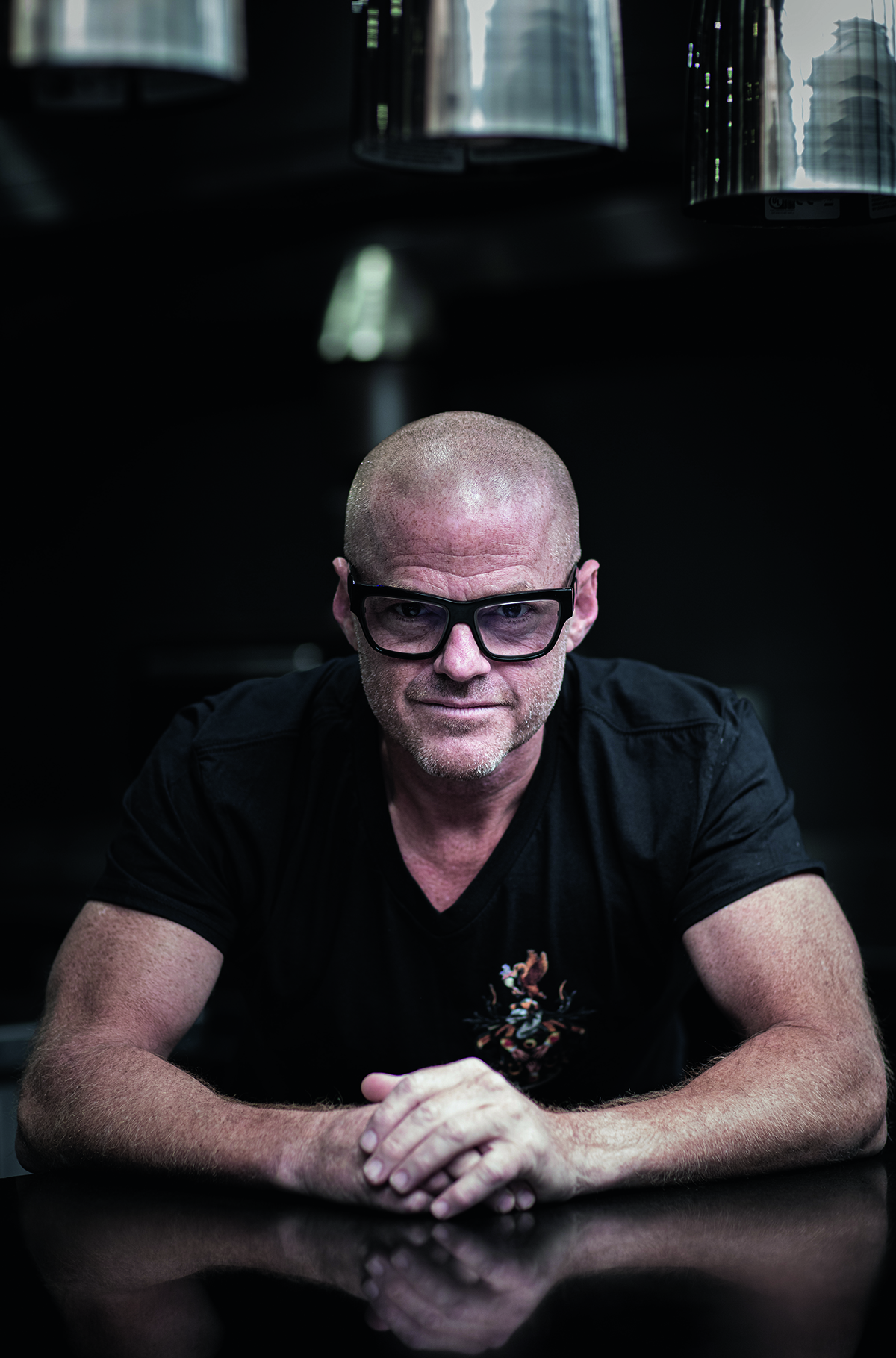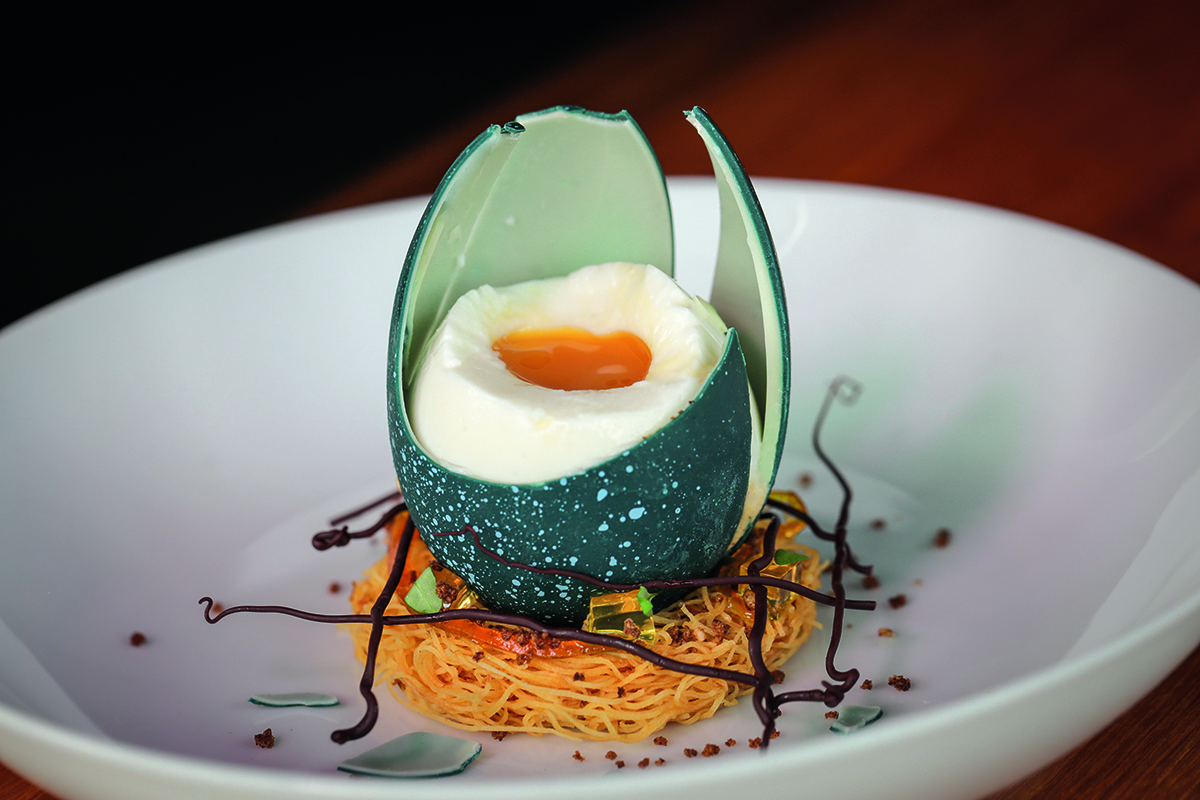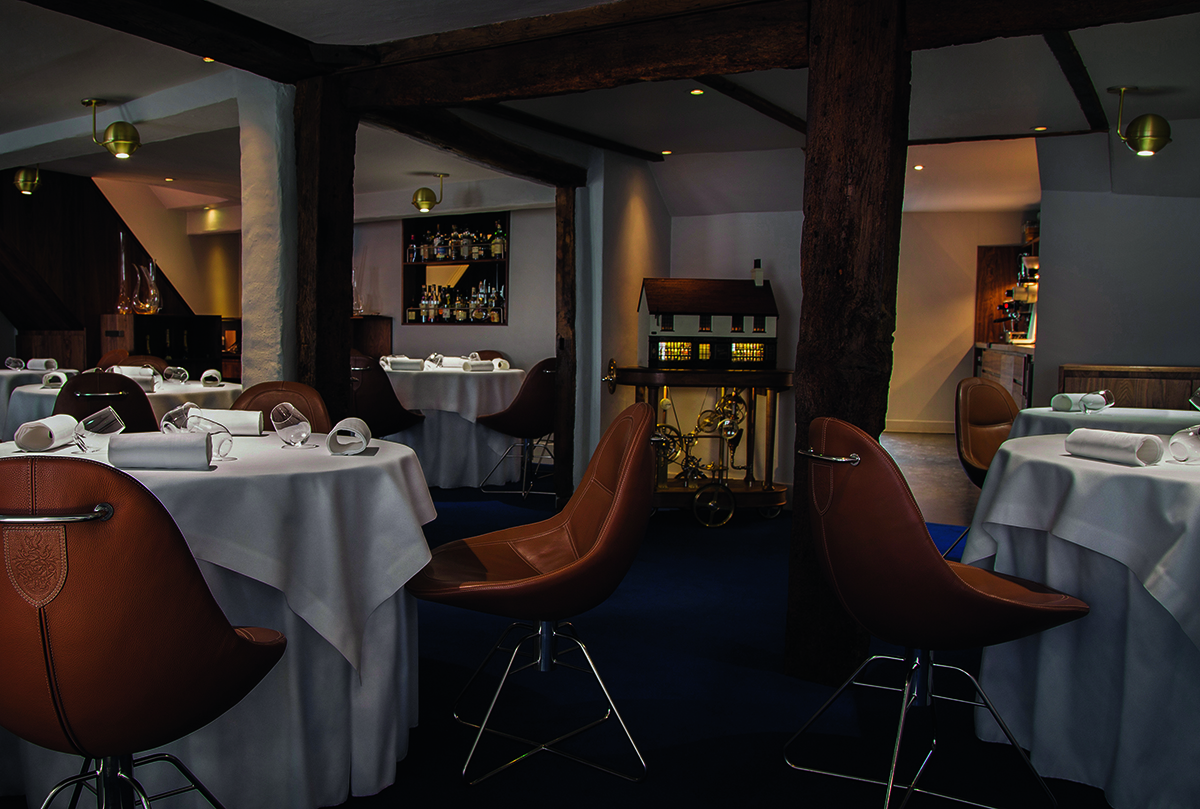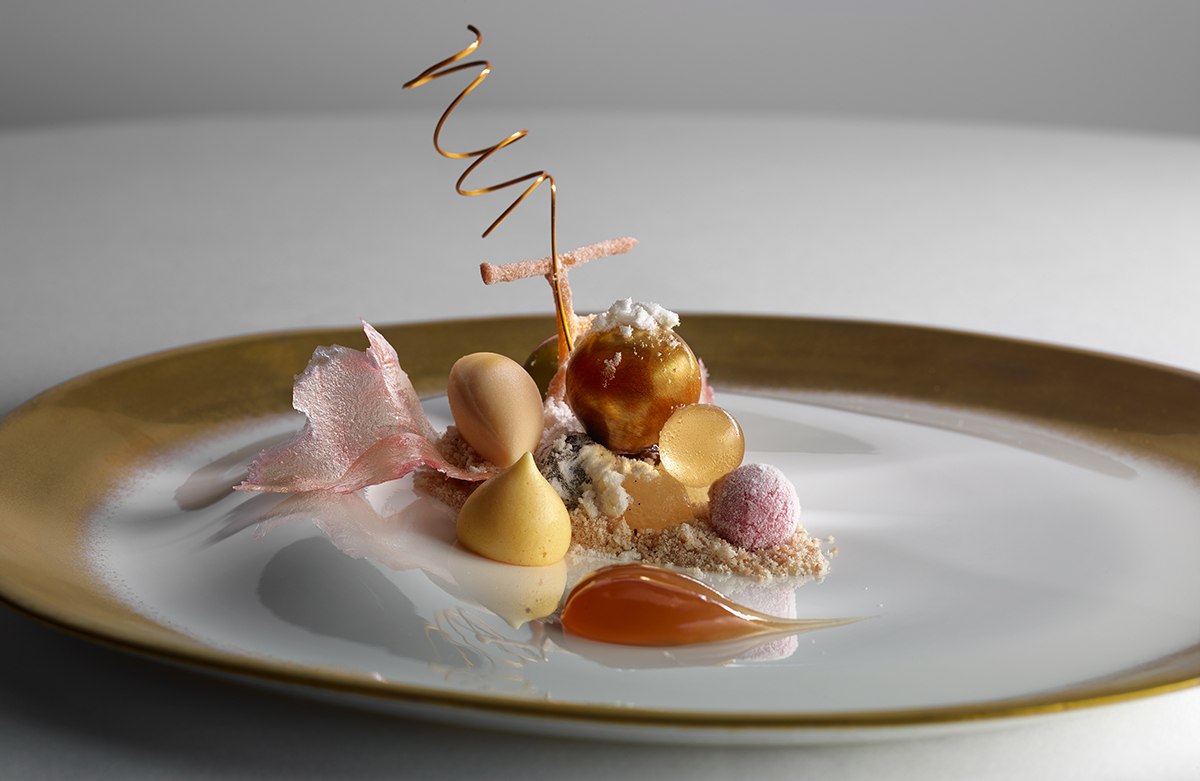
‘Meat Fruit (c.1430)’ is a signature dish of chicken-liver parfait set in mandarin gel, by Heston Blumenthal. Photo by John Scott Blackwell
As one of the world’s most recognised chefs, it’s easy to forget that Heston Blumenthal is the proprietor of two three-Michelin-star restaurants. He is a leader in resurrecting historic culinary dishes, and his equally famous approach to scientific cooking has led him to become an Honorary Fellow of the Royal Society of Chemistry
LUX: How did you become interested in historic cuisine?
Heston Blumenthal: I went to Books for Cooks, the cookbook shop in Portobello in west London, to look at kids books, when I noticed a yellow paperback called The Vivendier. It was by Taillevent, who was the chef to the Palais-Royal in Paris in the 14th century; I only picked it off the shelf because Taillevent was the name of a three Michelin-star restaurant in Paris. The book fell open to a recipe on how to roast a chicken and bring it back to life.
Follow LUX on Instagram: luxthemagazine
You take the chicken, you pluck it while it’s alive, then you pack it with wheat, German saffron and dripping, and apparently it makes it look like it’s cooked. You then put his head under its belly and rock it to sleep. Then you put it on a roasting platter with two roasted chickens and bring it into the great hall of your master – maybe a court jester’s jumping around – and you start carving the roasted chicken. Then you kill this poor thing and before you roast it, you stuff sulphur and mercury down its neck and – according to the recipe – when you roast it, it makes a clucking noise. So, you’d bring it back to life. I thought, “Well, my God, this is brilliant.” But I later learned that it was fake. The chefs in the châteaux were showing off to each other, so they’d just make up these recipes – there’s no evidence that anyone ever did them.

Chef Heston Blumenthal. Photo by John Scott Blackwell
So wouldn’t it be amazing if a modern chef with modern techniques didn’t actually replicate these recipes but took ideas from them? We started working with historians at Hampton Court Palace. The food historian Marc Meltonville said to me, “You might be interested in this: it’s called ‘Pommes d’Or’.” It was minced pork and veal formed into a ball, put on a spit, then basted with a parsley custard so it looked like an apple. That was where my inspiration for ‘meat fruit’ came from.

Eggs in Verjuice, after an 18th-century recipe
LUX: With so many options, can chefs be more creative now than in the past?
HB: I think our creativity is actually in danger. We live in a world where we’re so distracted and the paradox is that we invent things like the iPhone to make our lives easier, then we become slaves to them. They are incredible but they’re not as incredible as human beings. We’re in danger of losing the very essence of being human – and that’s imagination.

The dining-room at The Fat Duck
LUX: How does sustainability figure in your businesses?
HB: We go to see every farm and we make sure we’re carbon neutral. Everything gets used. All of the bits that we don’t serve goes to staff food.
Read more: Chef Yannick Alléno: The Innovator
We were one of the first restaurants ever to use day boats, because a couple of blokes on a fishing boat with a rod and line are not going to do any harm to the sea, unlike a big trawler with a net destroying the ocean floor. But the solution is not to stop eating fish.

The chef’s Botrytis Cinerea dessert. Photo by Jose Luis Lopez de Zubiria
LUX: Who do you cook for?
HB: Who am I cooking for? Me. The big-me to cook for the mini-me and the mini-me to cook for the big-me, both at the same time.
Heston Blumenthal is proprietor of two three-star restaurants, The Fat Duck, in the Berkshire village of Bray, and Dinner by Heston Blumenthal, in London. His other restaurants include The Hind’s Head, in Bray, and The Perfectionists’ Café, at Heathrow Terminal 2
Find out more: dinnerbyheston.co.uk
This article appears in the Summer 2022 issue of LUX





